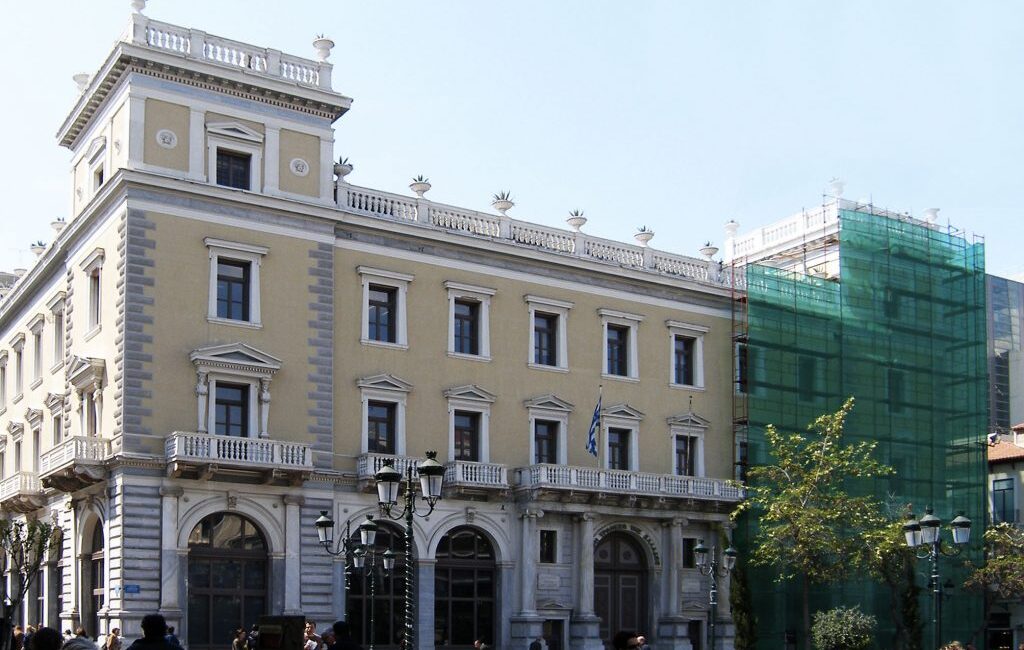Energy Service Company
Energy Saving Companies tailor their services to customers who are interested in an overall reduction in energy costs and bear the risk of investment in any given energy project.
Α. SHARED SAVINGS CONTRACT
The funding of the project is undertaken by the Energy Service Company (ESCO) and the ownership of the equipment passes to the customer upon termination of the contract. The ESCO remuneration is set as a percentage of the economic benefit from reduced energy costs and depends on the cost of the investment and the duration of the contract.
Β. GUARANTEED SAVINGS CONTRACT
The project financing is undertaken by the customer and the ownership of the equipment belongs from the outset to him. The ESCO guarantees for minimum energy efficiency levels, thus ensuring the client for the integrity and efficiency of the solution proposed. The ESCO fee is constant, but in case of deviation from the given guaranties it is being impaired.
C. EUROPEAN FRAMEWORK
These companies finance energy saving investments and receive as a reward for a number of years, part of the benefit resulting from the reduction of energy consumption due to the realization of these investments. The European Union Directive 2006/32 / EC promotes the creation of ESCO in member countries. Third party financing is an innovative practice and should be encouraged. In such arrangements, the beneficiary avoids investment costs by using the economic value of energy savings stemming from the investment of third party and repaying the investment costs and borrowings.
Energy Service Company (ESCO): A natural or legal person that delivers energy services and/or other energy efficiency enhancement measures at the user premises, and accepts some degree of financial risk in the process. The payment for the services delivered is based (wholly or partially) to successful saving energy and meeting the agreed performance promises.
Energy Performance Contracting: An agreement between the beneficiary and the provider (normally an ESCO) for taking energy efficiency improvement measures. Investment measures are paid by the amount of the agreed attainable energy savings.
Third Party Funding: An arrangement that includes a third party in addition to the energy supplier and the beneficiary of the energy efficiency improvement measures, which provides the capital for the measures and charges the beneficiary an amount equal to the benefits of energy savings achieved as a result of improvement measures . The third party may be an ESCO, without this being necessary.
Additionally Stated:
ESCO companies must ensure that the following information should be available in the final energy consumer in clear and understandable terms by distributors or by the administrators of the electricity distribution system, and to be available to him with an account of or under attached contracts and receipts. Specifically, the information to be provided to consumers about:
The current actual prices and energy consumption.
Comparisons of the current energy consumption, with those of the past year in the form of graphs.
If possible, comparisons with a landmark consumer of the same class standard.
To provide the above services, as we will see below is necessary the intermediation of an ESCO, but mainly the development and implementation of appropriate algorithms and applications for data processing and measurement of energy consumption.
D. OPERATING FIELD OF ESCO
ESCO companies’ are aiming to help users of electricity and natural gas and other energy sources, in order to reduce total cost of ownership of expended energy. These companies have been around for at least 50-75 years, although initially there was no specific name. Of course, the functions were doing, was similar to those serving a modern ESCO.
The goal of an ESCO is twofold: It tries to improve the efficiency of energy management in order to obtain competent financial results, while attempting to take account of environmental protection. These companies take action where there is waste of energy, either because of ignorance or lack of funds for restoration. However, it is very difficult to admit to anyone that the larger the current energy losses, the greater the company’s profit margin. Moreover it is logical, thus the ESCO will have shorter payback period for the project, lower investment costs and risk. Certainly one ESCO is neither charity or non-profit organization for the protection of the planet, but a company that thoroughly analyzes the energy data and determines the best solution for saving energy in order to gain both the customer and the company itself from the investment.
Energy service companies are specialized firms in energy issues with appropriate expertise and experience. One such company invests on behalf of the client – partner in the field of energy saving technologies and is also responsible for their operation, and of course in this way the energy costs of the customer are being reduced. The company’s remuneration derives precisely from the achieved reduction of the customer energy costs. For an agreed time, e.g. a number of years, the customer pays the company an amount related to the reduction achieved in energy costs. So the ESCO, has the benefits of the investments made. The energy service company does not necessary need to have large capital infrastructure but may use bank loans. At the same time the customers’ don’t need to invest capital money in energy saving, either because they don’t have it either because they want to use their capitals more profitably. In this way if an organization (client) for any reason cannot carry out on its behalf energy-saving investments (e.g. due to lack of funds, lack of expertise, etc.) it entrusts the energy service company this project, which implements it and on its behalf.
ESCO may be created by an organization (company) in cooperation with energy suppliers, energy equipment providers and manufacturers. This means that these companies will enter into a long term contract with the customer under which the repayment of the works is carried out by the benefits of reduced energy consumption or the cost for their purchase.
Within the framework of these project, a continuous monitoring of consumption of the ESCO customers, is carried out so they know the next step in reducing the cost of energy required. The energy saving company should generally define a supportive framework for project solicitation concerning distributed energy systems and measures for efficient use of energy in domestic, community and industrial level.
Ε. WHAT IS THE FUNCTION OF AN ESCO
Advices on users to reduce costs: At any given time the ESCO knows what are the energy requirements of the users and after exporting some features of their energy profile (for example peaks, average daily power consumption), offers a proposal to optimally procure the necessary energy, or proceeding a step further, by assessing space-time data, suggests ways (e.g. exploitation of the energy potential of the sun or wind) to achieve cost savings for the energy market.
Providing information on energy providers: The ESCO has at any given time information on the energy profile of its users in any given area. In this way it is able to offer an electricity provider one advantageous investment for installing a localized power plant to the appropriate area, or going a step further to propose a list of “good customers” for the undertaking.
Proper Power Management using real-time monitoring: From the energy consumption measurements we can identify information that might help us make predictions on energy production according to the energy needs of the users. For example the localization of deferred peaks in consumption of different users and their overlay, leads to more efficient use of energy as we are able to predict when the requested action is above the average power consumption and then to cover this demand from distributed generation. An ESCO collects energy data via email from all of the customers at regular intervals. The energy measurements may include VA and COS or whatever else has been determined or possibly can be requested online at that time as an extra measure. Then the customer can be informed either via an intuitive portal or even via SMS on his mobile phone on the energy consumption at the site and can be proposed an appropriate package for energy saving and/or advice for better management. Certainly though the provision of such energy services to individual residential customers at this time seems unreal, however the application to large business customers or in public buildings proved imperative need. Such large “clients” on one hand are interested in the cost savings from the energy market, and on the other the additional profit for environmental protection will be great, since they consume large amounts of energy and waste even more. In essence, the ESCO will play the role of intermediary between energy providers in a liberalized market and their clients. First let us see why industries, hotels and public buildings are more interested in providing services related to saving and power management. An industrial unit follows known and specified production process, with stages at which a certain amount of energy is consumed and which occurs at certain times of day. Approximately the same happens in a hotel, a school, or a hospital: only instead of the production process, we have people with specific habits and overall energy requirements that move in the facilities. Whereby an ESCO may, for given categories of customers, have ready pattern for comparison of energy data in real-time receiving from them, so without large computational cost for real-time data processing, and without delay, can be driven to conclusions and inform each customer in terms of energy requirements, but also for any deviations from the normal and desired values of consumed energy.
F. ENERGY SERVICES PROVIDED
Analysis and Control of Energy Data,
Energy management.
Design and Implementation of Studies.
Maintenance and Operation Control.
Facilities management.
Energy Supply and/or Equipment.
G. AN INTEGRATED SERVICE PACKAGE INCLUDES
Elaboration of the necessary studies – techno-economic feasibility studies, energy audits, implementation studies.
Ensuring funding – from partner financial conglomerates.
Fulfilling licensing procedure – submission PAE dossier, preparation with TSO association study, EIA preparation, submission dossier for license installation and operation in case of power generation.
Find granting schemes and submit the relevant files.
Supervision of installation and equipment supply.
Monitoring and maintenance of equipment.
Guaranteed outcome.
H. CONSUMER BENEFITS
Avoiding technical and financial risk: The consumer shall not bear any technical and financial risk as long as the ESCO undertakes all stages of the design and execution of the project, as well as the funding.
Avoid further lending: The consumer can go into an investment without carrying out further lending of the company and without paying equity, so that the finance of the business are untouched and reduce their expenses.
Avoiding bureaucratic procedures: The consumer does not need to spend man hours to prepare applications and studies required and also to monitor their progress.
It gives added value to the property: Since it modernizes the facility and simultaneously enhances energy class and sustainability features.








